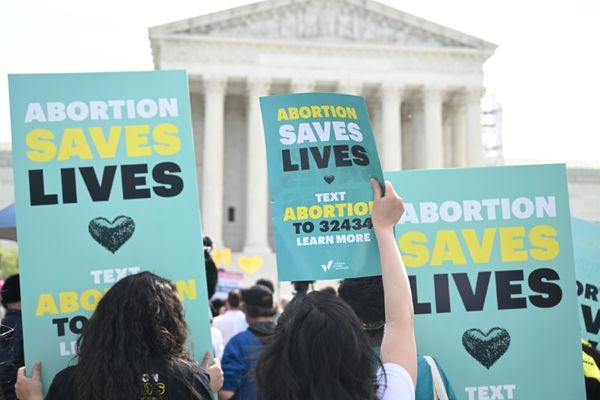
It is eerie, but in recent history, and noticeably after the Second World War, we have seen pandemics surface almost every 10 years: the Asian flu, the Hong Kong flu, cholera, severe acute respiratory syndrome (SARS), HIV/AIDS, swine flu, middle east respiratory syndrome (MERS), ebola and then the deadly covid-19. Given the frequency and the almost predictable return of strange new pathogens, pandemics are clearly no black swan events and therefore health systems must be prepared for the next. Merely referring to them as ‘Acts of God’ won’t help.
The recent outbreaks in Shanghai and a suspected case of a new variant in Mumbai are ominous, to say the least. It is important for us to keep track of the ‘variants of interest’ and certainly of the ‘variants of concern’.
There are many concerns for India (and the world) and many questions to answer. What have we learnt over the last two years? Are we ready to fight the next battle against a new pathogen or a new disease? In fact, are we even ready for a new variant?
Part of the answer lies with the vaccination coverage.
Jabbed enough?
There are a number of vaccine sceptics who have asserted that vaccines are not the solution—that mass vaccination actually results in deadlier variants and that the vaccines themselves were hurriedly pushed through and therefore were irrelevant. However, among the vast majority of the medical community, the argument is settled. We need upwards of 70%, preferably closer to 80%, of the population to be fully vaccinated for herd immunity to set in.
It is important to note that herd immunity is no guarantee against individuals getting infected. To be sure at a personal level, there is no alternative but to be fully immunized. One single dose is simply not enough.
How are we doing on this count? Across the world, slightly less than 60% of the population have been fully immunized. India has only managed to fully vaccinate just under 63% of its population. With mass vaccination efforts petering out and the urgency no longer palpable, raising this to 70% is a far cry and therefore the vulnerability to another wave remains high.
Even the percentages on a single dose are not good enough. We have given less than 73% of our population a single dose, which means nearly 450 million people haven’t even got one dose of the covid- 19 vaccine. There is some consolation in the fact that the word wide average is only 66%.
The second cause of concern is on the booster dose. Booster doses are given to those who have taken the vaccine but as time goes by, the protection provided by the original shot begins to wane. This must be the case with large proportions of the population who have taken the vaccine more than a year ago. However, here, we have done very poorly. While the world wide average for those who have taken a booster shot is 24%, in India, not even 2% of the population has been given a booster. This leaves a huge chunk of the population vulnerable.
Broken systems
India, meanwhile, is vulnerable also because the country hasn’t ramped up its health systems. There is much work left to be done.
The World Health Organization (WHO) has recommended 44.5 skilled healthcare workers per 10,000 people. India’s health workforce is less than 11 per 10,000.
While we all know that India’s system has very few doctors, what is alarming is also the shortage of nurses and midwives—they seem worse. The Medical Council of India says that India has close to 1.2 million doctors and the Nursing Council of India claims that there are 2.3 million nurses and midwives. However, the government’s own Periodic Labour Force Survey data (2018-19) shows that there are only 9 lakh doctors, including the Ayurveda and Unani practitioners, working as of now. Among the nurses and midwives, nearly 1.5 million are missing from the labour force—we have only 8 lakh nurses working.
The reasons for this discrepancy in data? Firstly, not all medical graduates join the workforce. Some go on to study further, while some just drop out to pursue other careers. The second reason is that a large number of women medical graduates opt out in a patriarchal society because of the difficulty in juggling between careers and responsibilities at home. More than 50% of students in medical colleges today are women, but only about 17% of practising allopathic doctors are female. Finally, a significant number of Indian graduates find their way to other markets, both in the developing and the developed parts of the world.
During the pandemic waves, this shortage was a major reason—along with stockouts and lack of hospital beds—for the enormous loss of life across the country.
The WHO, last week, stated that India accounted for over 31% of all ‘excess deaths’ globally in the two covid-19 years of 2020 and 2021. Around 14.9 million excess deaths were recorded globally, of which a staggering 4.74 million were from India—the highest in the world. While the Indian government has disputed these numbers, the trend underlines the need to quickly ramp up healthcare infrastructure in preparation for the next pandemic.
Even after opening all the 157 medical colleges and 50 nursing colleges that the government has promised, we will be woefully short of the minimum requirement in 2030.
Get the data
Watching out for any tell-tale signs of a new threat needs real-time monitoring and notification mechanisms across the world. Governments, everywhere, and at all levels, must enable data registers and notifications that can quickly aggregate information and send to central databases. Constant tracking, tracing and surveillance is key to identifying new strains and variants.
In the Indian context, it is important to keep a ready account of the dead and the causes of their deaths. It is the lack of this data collection mechanism that has embarrassed the health system in the country when WHO came up with its excess deaths estimate. It is important to automate all registrations of births and deaths and aggregate this data.
Real time data would enable governments to bring in masking and distancing norms. If the threat becomes bigger, make testing and quarantining mandatory.
Bill Gates stresses on the importance of three things to fight pandemics—diagnostics, data transparency, quarantine. He argues that all these need to be done within 100 days to prevent a local outbreak from travelling to foreign countries.
The manner in which China contained the spread in its initial days is an example of how active surveillance, testing, distancing and quarantining could result in arresting the spread of this hugely infectious disease. If, like in Wuhan in 2019-20, the covid-19 spread was contained within 100 days, 98% of the total deaths could have been averted.
India delayed containment when the pandemic first arrived even after knowing of positive cases. But the country also learnt that wide-spread lockdowns can never be the solution. They are draconian and only provide a feel-good factor by flattening the curve for a while. The number flares up again and when it does, it becomes unmanageable. Lockdowns also cause enormous economic hardships, reverse migration, and stockouts of essential drugs, including lifesaving oxygen cylinders.
Gates argues that the health gap—or the differential access to health care between the rich and the poor—must be reduced. With the enormous attention that health systems have received during the last two years, it is possible for states and governments to ramp up expenditure on health information systems, testing facilities and databases that contain and analyse this information.
Keep the research alive
Given that the threat of new variants and new viruses is real, let’s look at what is known.
Some of the vulnerabilities have been identified. Animal to human transmission is now seen as a major threat. It is estimated that 75% of new infections come from animals and that there are upwards of 5 lakh animal viruses lurking around. Only 250 of those have yet made the lethal jump to human populations. Therefore, it is important to keep studying animal viruses and quickly identify those that are ready to transition to human beings.
The flurry of research activity that we saw during SARS and MERS simply petered out as the threat receded. This cannot happen again.
It is important for public health institutes and laboratories to gather information on various potential threats. Comparing genome sequences from across continents should be facilitated. Active and passive surveillance must be carried out, specially in border settlements where human beings come in contact with animals from the wild.
A significant number of researchers have now begun collaborating at the academic level. The number of papers written by co-authors working across borders have spiked, particularly during the pandemic. Funding agencies have also ensured that teams across national borders work closely. The WHO has for long been maintaining and encouraging cross border cooperation. For example, the body’s South East Asia Region has taken several initiatives since the mid-1990s to ensure that Nepal, Bhutan, Bangladesh and Myanmar—countries that border India—monitor the spread of diseases across borders, and ensure treatment to all infected irrespective of nationalities or legal status.
The ‘End TB’ strategy, fighting kala azar and the Global Technical Strategy for Malaria are all global efforts that have been successful in the past.
The government’s task
Of course, governments need to work diligently on communication programmes that educate the public on the need for sanitation, distancing and hygiene. The importance of heeding warnings and alarms when they are sounded needs to be stressed as well.
In India, coordination across states is essential to ease out the burden on hospital beds and intensive care units (ICUs). Imports and procurement orders for life saving equipment and vaccines must be streamlined and enough stocks held as preparation for a possible fourth wave.
The state must also provide immediate data on vaccine efficacy, new outbreaks, number of vacant ICU beds, and guide people on when to get booster doses. Steps need to be taken to ensure that there is no stigma attached to getting infected and that there is adequate care taken for a large number who have suffered on account of mental health issues.
Having said that, a fourth wave looks unlikely as the strains and variants we have seen after Delta have been benign. They haven’t really threatened to take our mortality levels up. However, the virus is still lurking and the battle is far from over on either the medical or the economic front. Therefore, responsible individual behaviour should be to wear masks and maintain physical distancing—yes, easy to preach but very tough to practice, like we have mostly seen.
Like this article earlier mentions, we will certainly see another pandemic within the next decade and a half—if not a fourth wave of covid-19. We will have only ourselves to blame if we don’t ramp up our hospital infrastructure by then.
(Amir Ullah Khan teaches development policy at the Indian School of Business)







